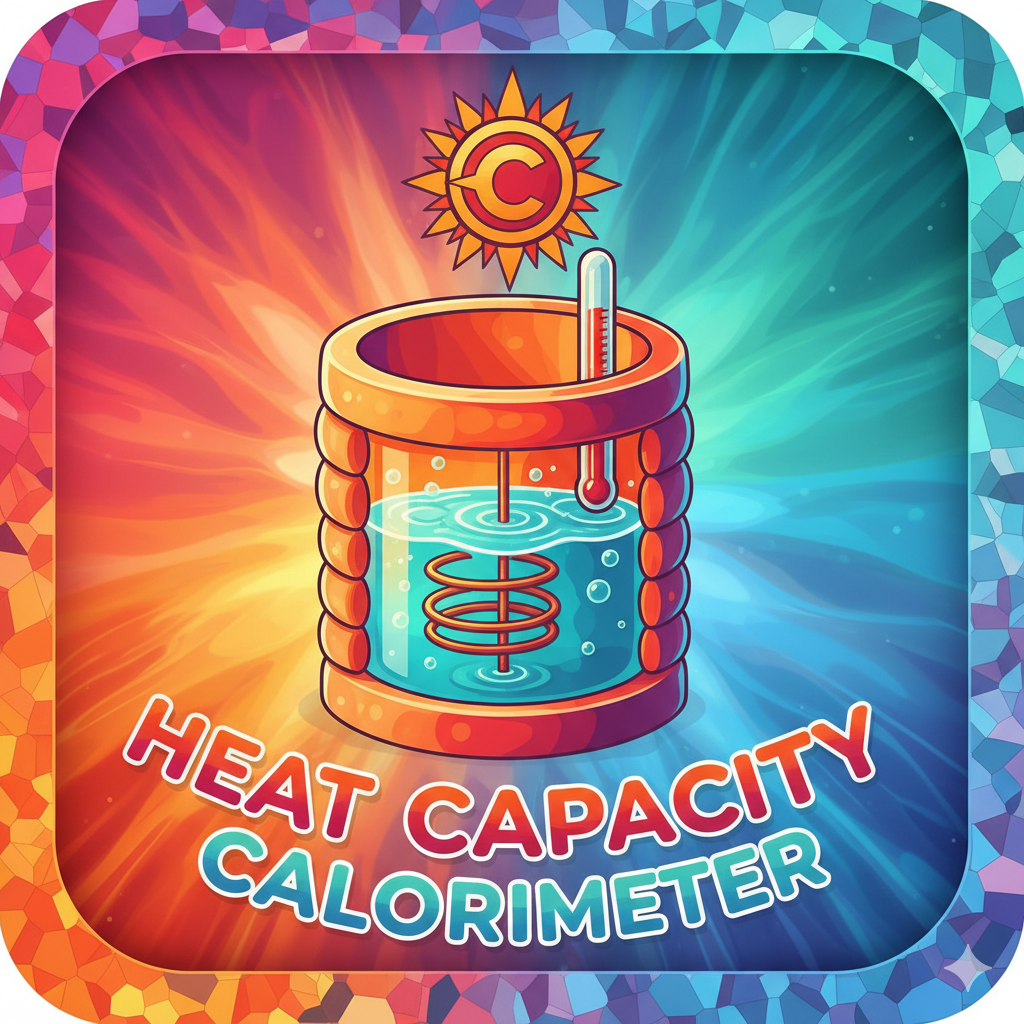Heat Capacity Calorimeter
Accurately measure heat capacity with our calorimeter. Ideal for materials science, chemistry & research. Learn more!
The Heat Capacity Calorimeter Tool 🧪✨ is a precision thermodynamics calculator designed to help students, chemists, physicists, and researchers compute heat energy (q), specific heat (C), and temperature change (ΔT) in calorimetry experiments.
By using the core principles of heat transfer and energy conservation, this tool allows you to analyze chemical reactions, temperature changes, and heat capacities in solids, liquids, and solutions — with laboratory-level accuracy.
It’s perfect for chemistry labs, thermal physics studies, and energy balance research, providing step-by-step results that make calorimetry calculations effortless.
⚙️ Key Features:
🔥 Instant Calorimetry Calculations:
Compute heat energy (q), mass (m), specific heat (C), or temperature change (ΔT) — just enter any three and the tool automatically finds the missing value.🧮 Core Formula Supported:
Where:
q = Heat energy (Joules or calories)
m = Mass (grams or kilograms)
C = Specific heat capacity (J/g·°C or cal/g·°C)
ΔT = Temperature change (°C or K)
⚗️ Supports Different Materials:
Preloaded specific heat values for common substances like:🧊 Water (4.18 J/g·°C)
🪨 Aluminum (0.897 J/g·°C)
🧱 Iron (0.449 J/g·°C)
🫗 Ethanol, Copper, Silver, and more
🧫 Reaction Calorimetry Mode:
Calculate heat released or absorbed during a chemical reaction in a coffee-cup or bomb calorimeter setup.🧾 Step-by-Step Output:
Displays a clear, formula-based solution:🌡️ Calorimeter Constant Mode (C_cal):
Compute or apply a calorimeter constant for more accurate total heat capacity of the system.🧠 Energy Flow Visualization:
Optional diagram showing heat exchange between the system and surroundings — exothermic (heat released) or endothermic (heat absorbed).📊 Unit Conversion Ready:
Convert results between Joules ↔ calories, grams ↔ kilograms, and °C ↔ Kelvin automatically.📈 Graphical Analysis (Optional):
Plot temperature vs. time to visualize heat transfer curves and equilibrium points.📱 Responsive Interface:
Designed for both classroom and professional use — fully compatible with desktops, tablets, and smartphones.🔒 Privacy Protected:
100% offline-capable — your calculations never leave your device.
💡 How It Works (Simplified):
Calorimetry measures the amount of heat energy transferred in a physical or chemical process.
🧮 Basic Equation:
🧠 Extended System Equation:
When accounting for the calorimeter’s own heat absorption:
You can use this to find:
Heat absorbed or released (q)
Final equilibrium temperature (T_f)
Calorimeter constant (C_cal)
📘 Example Calculation:
Given:
Mass of water = 200 g
Specific heat = 4.18 J/g·°C
Temperature change = 20°C → 35°C
Solution:
✅ Result: The system absorbed 12.54 kJ of heat energy.
⚗️ Example 2 – Finding Final Temperature:
Given:
q = –6270 J
m = 100 g
C = 4.18 J/g·°C
✅ Result: The sample cooled by 15°C (exothermic reaction).
🧭 Perfect For:
🧪 Chemistry Students: Understand energy transfer in reactions and solution mixing.
⚙️ Physics Learners: Study specific heat and temperature equilibrium in thermal systems.
🔬 Researchers: Measure heat of reaction or combustion experimentally.
🧫 Lab Instructors: Teach real-world calorimetry concepts visually.
🧰 Engineers: Analyze thermal energy flows in materials and processes.
🔍 Why It’s Valuable:
The Heat Capacity Calorimeter Tool transforms the complexity of thermodynamic equations into easy, accurate, and educational calculations.
It helps users:
✅ Determine energy exchange between systems and surroundings.
✅ Learn how temperature, mass, and specific heat affect energy transfer.
✅ Understand calorimeter constants and error corrections.
✅ Reinforce thermodynamic concepts through visualization.
✅ Plan laboratory experiments efficiently.
It’s your virtual calorimeter — ready for classroom demonstrations, lab work, or quick problem-solving.
🧩 Advanced Options (Optional):
🌡️ Bomb Calorimeter Mode: Calculate heat of combustion for fuels or organic compounds.
💧 Mixing Calorimetry: Find final equilibrium temperature when two liquids mix.
🧾 Energy Loss Correction: Apply heat loss compensation for open-system setups.
📈 Dynamic Simulation: Visualize heat exchange over time in a temperature vs. time graph.
⚙️ Material Library: Includes predefined specific heat constants for metals, liquids, and gases.
🌍 Common Use Cases:
| Experiment | Substance | Known | Find | Result |
|---|---|---|---|---|
| Heating Water | H₂O | m, C, ΔT | q | 6.27 kJ |
| Cooling Aluminum | Al | q, m, ΔT | C | 0.9 J/g·°C |
| Neutralization Reaction | HCl + NaOH | T₁, T₂, m | q | Exothermic |
| Combustion (Bomb) | Methane | ΔT, C_cal | q | 890 kJ/mol |
| Mixing Liquids | Oil + Water | T₁, T₂ | T_final | 29°C |
🔥 Scientific Insight:
The law of conservation of energy governs calorimetry:
“Energy cannot be created or destroyed — only transferred.”
When two substances or systems interact, heat lost by one equals heat gained by the other. Calorimetry allows precise measurement of this exchange to determine reaction enthalpies, specific heats, and energy efficiencies.
✨ In Short:
The Heat Capacity Calorimeter Tool 🌡️⚗️ is an all-in-one thermal analysis calculator that simplifies the study of heat transfer, specific heat, and calorimetric reactions. Whether in a classroom or research lab, it delivers instant, reliable thermodynamic insights.
Measure. Calculate. Understand Heat.
With the Heat Capacity Calorimeter, thermodynamics becomes clear, visual, and practical. 🔥🧮⚗️






